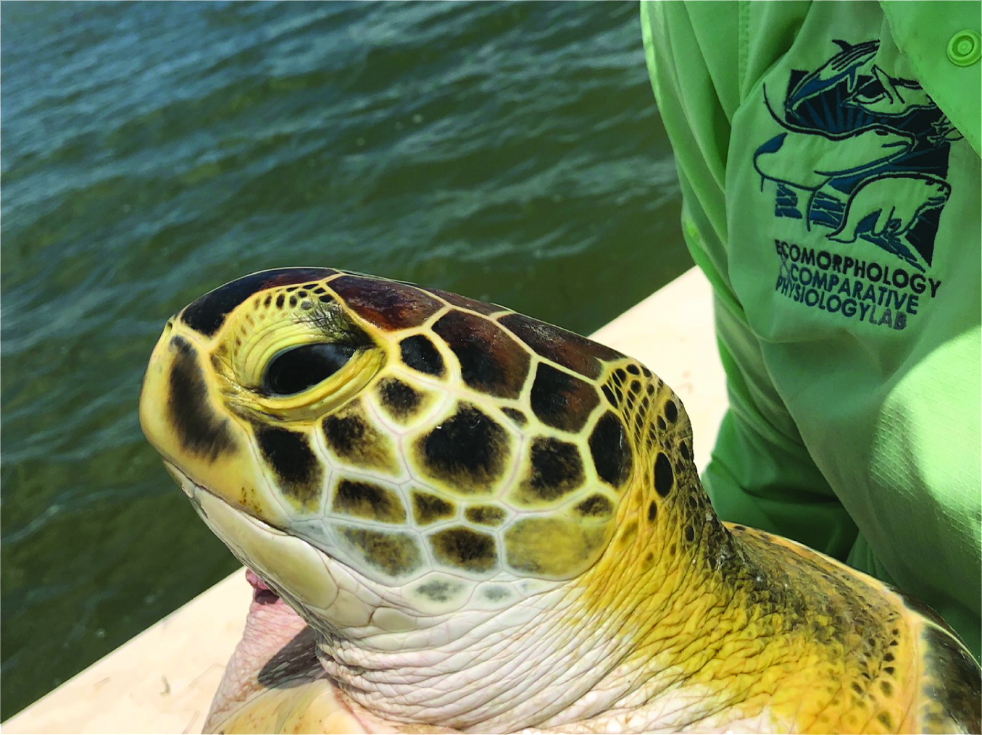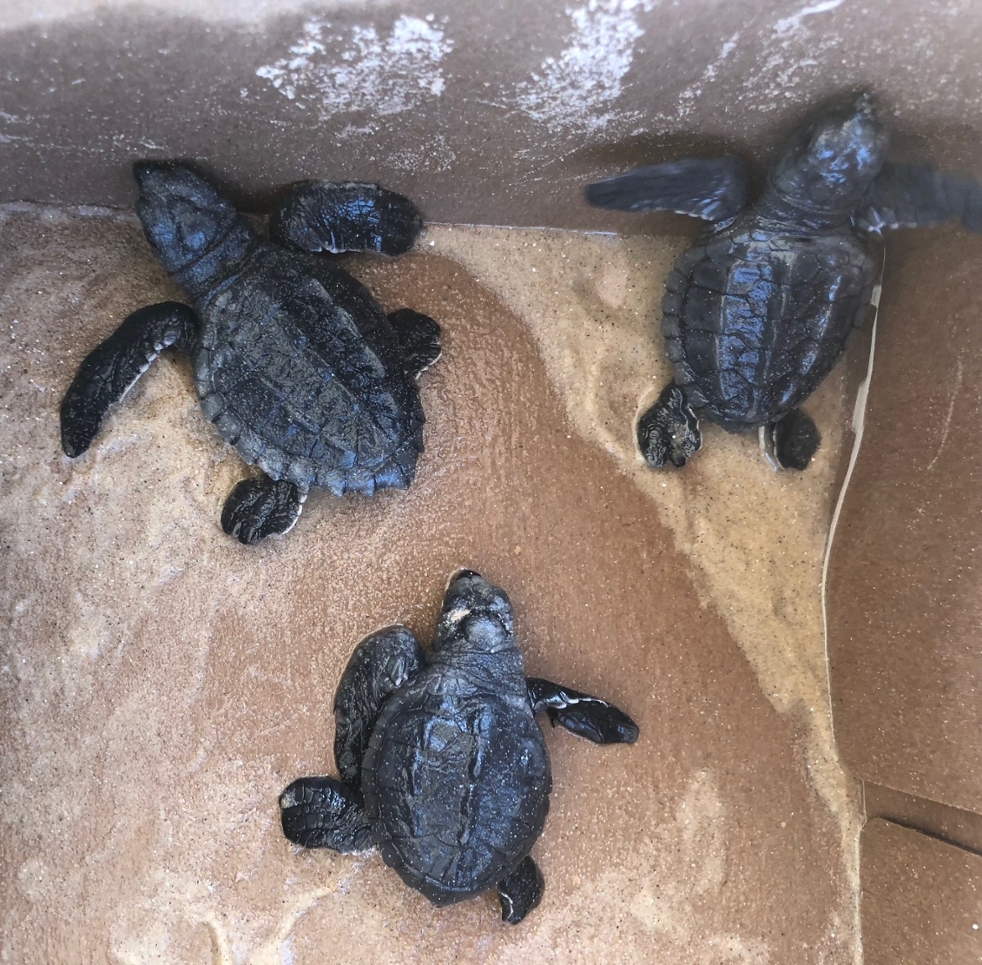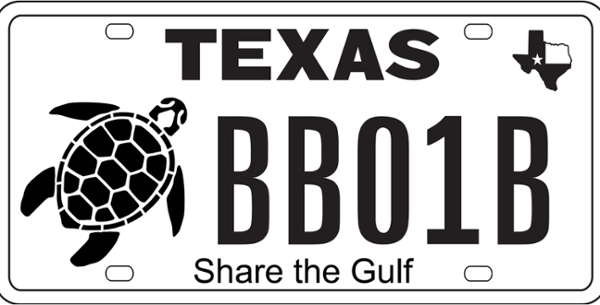New Sea Turtle Research Center Coming to TAMUG
April 22, 2019
Tweet
By Patrick Temperilli, Academic Affairs
UPDATE: April 29, 2019
The Gulf Turtle Research Center’s official website is live and specialty plates are available for purchase!
Their website, www.tamug.edu/GulfCenterforSeaTurtleResearch, shares information about the Center, including its mission, research activities, partners and recent news.
The site also offers ways to support the Center’s sponsored research via grants, gifts and donations, or the purchase of a specialty license plate from the Texas Department of Motor Vehicles. These donations and specialty plate sales help to generate support for the Center and its research activities, such as the in-water sea turtle capture and tagging program.
For those interested in donating to the Center directly or purchasing the “Sea Turtle" specialty plate, information is available here.
Original Article
Texas A&M University at Galveston will be the home of the new Gulf Center for Sea Turtle Research, with Department of Marine Biology Professor Dr. Christopher Marshall serving as the inaugural director.
The Gulf Center for Sea Turtle Research will seek to use its strategic location and research expertise to facilitate the coordination of sea turtle experts from institutions across Texas and the Gulf of Mexico to promote and support research that leads to restoration of sea turtle populations in the Gulf.
Colonel Michael Fossum, TAMUG's Chief Operating Officer, is ecstatic about the news. “Having the Gulf Center for Sea Turtle Research located in Galveston is not only a great opportunity for our university, but will be of great benefit to Galveston Island and the entire Gulf of Mexico region as we strive to ensure these creatures will always call these waters home,” he said.
Chief Academic Officer Dr. Patrick Louchouarn is equally excited, adding “I am grateful for the support of the Board of Regents through their recent approval of the creation of the Gulf Center for Sea Turtle Research at Texas A&M University at Galveston."
He also noted, "The Galveston Campus of Texas A&M University continues to be a leader in matters of marine and coastal affairs and our scientists continually work to provide solutions to address our changing world. I am grateful for the efforts of Dr. Christopher Marshall and Dr. Antonietta Quigg for their leadership in developing this center, which is designed to promote an interdisciplinary and international approach to solving current issues of sea turtle biology and their conservation."
The primary goal of the Center is to create a consortium that will enhance the efforts of individual researchers in support of programmatic grant proposals that individual researchers usually cannot access. Other goals include establishing research priorities, increased cooperation and communication of researchers throughout the Gulf, train the sea turtle biologists of the next generation, and conduct sea turtle research in the region.
The initial contributors to the Center include Texas A&M University at Galveston, the National Parks Service's Padre Island National Seashore’s Sea Turtle Science and Recovery Division, Texas Parks and Wildlife and the U.S. Fish and Wildlife Service, but many more are expected to join, and onboarding of additional academic and industry members has already begun.
A Black Box 
The research center will fulfill the need for data regarding local sea turtle populations in the western Gulf of Mexico, which currently is relatively incomplete compared with that of the eastern Gulf.
“I noticed that my colleagues from the eastern Gulf use the word ‘black box’ in terms of data for sea turtles from Texas and the western Gulf of Mexico,” Marshall said. “Right now in the western Gulf of Mexico there’s actually very few groups conducting sea turtle research.”
“It just made me realize that we really need to pull together region-wide if we are going to make any progress. We need to get out of our silos and work cooperatively. Sea turtles have been underserved in this part of the Gulf. And that’s not through any lack of effort, but there’s only been a couple of camps doing the majority of the work. It’s a long coast. We need more scientists in this region studying sea turtles."
But Marshall does not want to confine the new center’s impact and reach to the Texas Gulf Coast. “It’s not just the western Gulf,” he said. “We’ll have representatives from all over the Gulf of Mexico. Particularly exciting is that we’ll be reaching out to our Mexican and Cuban collaborators. So the Gulf Center for Sea Turtle Research really is all about the entire Gulf of Mexico.”
Finding the Funds, Gaining Momentum
To get the Center up and running, TAMUG will provide some funding for the first two years, but that still leaves plenty of heavy lifting to be done. “Our first goal is to raise awareness of sea turtles in this part of the Gulf of Mexico and to get the word out that the new Gulf Center is here,” Marshall said. “Much effort will be spent on marketing and travel to gain support and momentum.”
In addition to writing grants, other revenue streams will be sought to help support the Center and its research activities beyond those initial years. These include gifts and other charitable donations from the community and any organization interested in conserving sea turtles.”
In a huge boost of support, starting April 29th, 2019, the Texas Department of Motor Vehicles will have the "Sea Turtle" specialty license plate available for purchase. Part of the funds generated from the initial sale and the proceeding registrations will benefit the Gulf Center for Sea Turtle Research and its research activities, such as the in-water sea turtle capture and tagging program.
“The long-term goal is to provide grants for graduate student research through the "Sea Turtle" specialty license plate program; we plan to model the Florida "Sea Turtle" license plate grant program once our program is generating sufficient funds,” Marshall said.

Research for a Common Cause
Marshall has plenty to tackle as the director of the Gulf Center for Sea Turtle Research.
“Within the first year, I’d like to travel to all the regions that will be involved, particularly our international partners and establish our executive board.” To get the most out of having such a diverse and far-flung group of researchers with a common goal, they’ll need to come together from time to time. “We plan to have meetings every other year so we can share our results and projects that we’re working on,” Marshall said.
“A major objective is to plan for the future,” Marshall said, “and that means providing incentives to start training sea turtle biologists here in Texas and the western Gulf of Mexico so that we can create a sustainable sea turtle research program over time.” Marshall said. “It takes sustained effort over decades to effectively manage sea turtle populations and we desperately need increased human resources to effectively do that,” he said.
With the Gulf Center for Sea Turtle Research becoming a reality here in Galveston, that goal is now much more attainable.
###
Media contact:temperilli@tamug.edu, 409.740.4783
More:
Health & Environment
Science & Technology
Marine Biology
Executive News